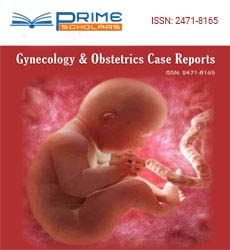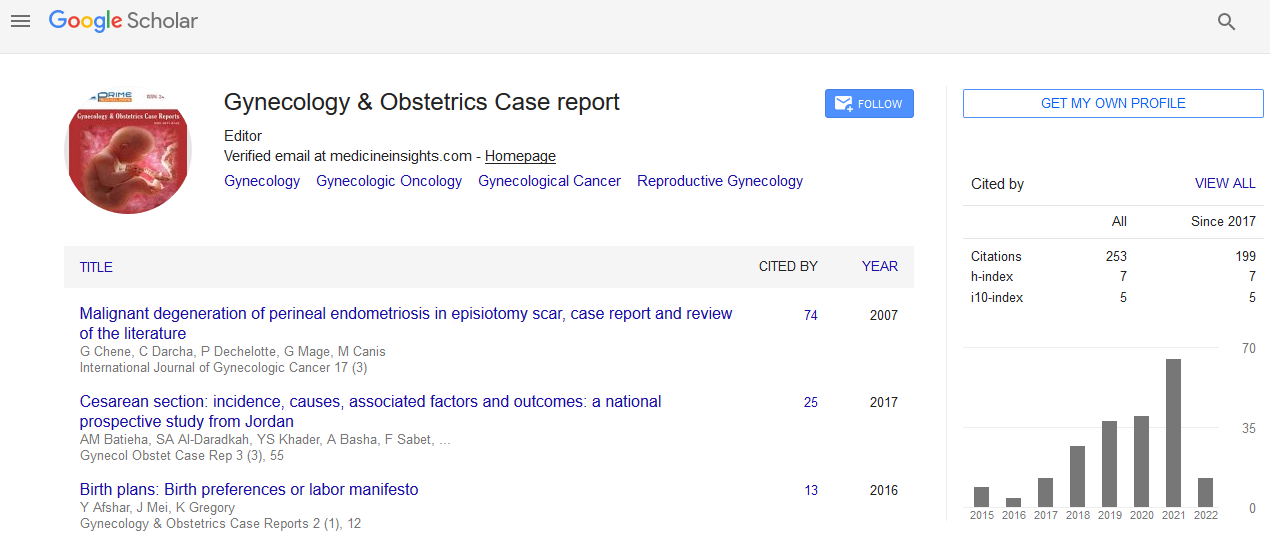Commentary - (2025) Volume 11, Issue 1
Fetal Brain Development: From Conception to Birth
Amelia Nael*
Department of Women, Children and Public Health Sciences, Fondazione Policlinico Universitario Agostino Gemelli IRCCS, 001893 Rome, Italy
*Correspondence:
Amelia Nael, Department of Women, Children and Public Health Sciences, Fondazione Policlinico Universitario Agostino Gemelli IRCCS, 001893 Rome,
Italy,
Email:
Received: 27-Oct-2024, Manuscript No. ipgocr-25-22698;
Editor assigned: 30-Dec-2024, Pre QC No. ipgocr-25-22698(PQ);
Reviewed: 10-Jan-2025, QC No. ipgocr-25-22698(Q);
Revised: 17-Jan-2025, Manuscript No. ipgocr-25-22698(R);
Published:
24-Jan-2025
INTRODUCTION
Fetal brain development is a complex and dynamic process that begins soon after conception and continues throughout pregnancy, culminating in the birth of a baby. It is a critical period during which the foundation for cognitive, emotional and sensory functions is laid. This intricate development is influenced by genetic, environmental and nutritional factors and disruptions at any stage can lead to significant neurological consequences. Understanding the stages of fetal brain development provides valuable insights into the formation of the human brain and its capabilities at birth. The journey of brain development begins shortly after fertilization, when the fertilized egg begins its rapid cell division and differentiation. Within the first few days, the embryo develops a neural tube, which will eventually form the central nervous system, including the brain and spinal cord. The neural tube forms along the back of the embryo and then closes, setting the stage for further brain development. This process occurs between the third and fourth weeks of gestation and any failure in the closure of the neural tube can lead to serious birth defects, such as spina bifida or anencephaly [1].
Around the fifth week, the neural tube differentiates into three primary regions: the forebrain, midbrain and hindbrain. The forebrain is the largest and will develop into the cerebral cortex, responsible for higher cognitive functions like reasoning, memory and voluntary movement. The midbrain and hindbrain will develop into structures responsible for basic life-sustaining functions such as breathing, heartbeat and reflexive actions [2]. At this early stage, the brain is composed mostly of rapidly dividing cells called neuroblasts. These cells will later mature into neurons, the building blocks of the nervous system. The production of neurons and glial cells, which support and protect neurons, is a highly regulated process that continues throughout fetal development. As the neural tube develops, it becomes subdivided into distinct regions, each of which will give rise to different parts of the brain.
DESCRIPTION
By the seventh to eighth week of pregnancy, the fetal brain begins to show more recognizable structures. The forebrain further divides into the diencephalon and telencephalon. The diencephalon gives rise to structures such as the thalamus and hypothalamus, which are involved in sensory processing and regulating vital functions, including temperature and hunger. The telencephalon develops into the cerebral cortex, responsible for complex functions like sensory perception, motor control and thought processes [3]. During the second trimester, the fetal brain undergoes significant growth and refinement. The neural connections between neurons, or synapses, begin to form, allowing for more complex communication within the brain. This stage is characterized by an increase in the number of neurons and the beginning of synaptogenesis, the formation of synapses, which is critical for brain function. The cerebral cortex continues to expand and areas involved in sensory processing, motor control and language development begin to take shape. During this time, the fetal brain also begins to exhibit electrical activity, a sign of the developing nervous system's ability to transmit signals.
As the pregnancy progresses into the third trimester, the fetal brain undergoes even more rapid maturation. The cerebral cortex becomes more complex, developing grooves (sulci) and ridges (gyri) that increase the surface area, allowing for more neurons to occupy the same space. The myelination process also begins during this time, in which a fatty substance called myelin wraps around the axons of neurons, improving the speed and efficiency of signal transmission. This process continues after birth and well into childhood, contributing to the development of motor skills and cognitive abilities [4]. By the end of the pregnancy, the fetal brain is functionally mature enough to support basic life functions, such as breathing, heartbeat and the ability to process sensory information. However, it is far from fully developed. At birth, the human brain is only about a quarter of its adult size but contains billions of neurons and trillions of synapses. The brain's plasticity, its ability to change and adapt in response to experience, is most pronounced during the first few years of life, when the brain undergoes significant growth and refinement in response to environmental stimuli. The development of the fetal brain is a highly sensitive process. Factors such as maternal nutrition, exposure to toxins, infections and stress can significantly impact fetal brain development. Adequate intake of essential nutrients, such as folic acid, is crucial during early pregnancy to prevent neural tube defects. Exposure to harmful substances like alcohol, tobacco, or drugs can interfere with normal brain development and lead to conditions like fetal alcohol spectrum disorders or developmental delays. Infections during pregnancy, such as rubella or cytomegalovirus, can also affect brain development and result in birth defects [5].
The environment in which the fetus develops also plays a role in shaping brain development. Stress experienced by the mother can lead to elevated levels of cortisol, a hormone that can cross the placenta and affect the fetal brain. Chronic stress during pregnancy has been linked to an increased risk of developmental and behavioral problems in children. Additionally, the mother's overall health, including her physical and emotional well-being, influences the development of the fetus's brain. As the fetus nears the time of birth, the brain's ability to support higher cognitive functions, such as reasoning and memory, is still in the early stages of development. However, many basic brain functions, such as the ability to process sensory information, regulate vital functions and respond to environmental stimuli, are already functional. The brain's development continues after birth, with rapid growth during infancy and early childhood as the brain matures and forms the connections necessary for more complex thought, behavior and motor skills.
CONCLUSION
Fetal brain development is a highly intricate and carefully orchestrated process that begins at conception and continues throughout pregnancy. From the formation of the neural tube to the growth and maturation of the cerebral cortex, the fetal brain undergoes profound changes that lay the foundation for cognitive, sensory and motor functions. A wide range of factors, including genetics, nutrition, environment and maternal health, play a role in shaping the development of the brain. As our understanding of this process continues to evolve, it provides essential insights into how the human brain develops and the factors that can influence its growth and function.
Acknowledgment
None.
Conflict of Interest
None.
REFERENCES
- Brinegar KN, Sheth RA, Khademhosseini A, Bautista J, Oklu R (2015) Iliac vein compression syndrome: clinical, imaging and pathologic findings." World J Radiol 7 (11): 375.
Google Scholar Cross Ref Indexed at
- Garrido M, Clavero J, Huete A, Sánchez C, Solar A, et al. (2008) Prolonged survival of a woman with lung cancer diagnosed and treated with chemotherapy during pregnancy. Lung Cancer 60(2):285-290.
Google Scholar Cross Ref Indexed at
- Yates R, Zhang J (2015) Lung cancer in pregnancy: an unusual case of complete response to chemotherapy. Cureus 7(12)
Google Scholar Cross Ref Indexed at
- Boere I, Lok C, Vandenbroucke T, Amant F (2017) Cancer in pregnancy: safety and efficacy of systemic therapies. Curr Opin Oncol 29(5):328-334.
Google Scholar Cross Ref Indexed at
- Rogers JE, Dasari A, Eng C (2016) The treatment of colorectal cancer during pregnancy: cytotoxic chemotherapy and targeted therapy challenges. Oncologist 21(5):563-570.
Google Scholar Cross Ref Indexed at
Citation: Nael A. (2025) Fetal Brain Development: From Conception to Birth. Gynecol Obstet Case Rep. Vol.11 No.1:06.
Copyright: Copyright: © Nael A. This is an open-access article distributed under the terms of the Creative Commons Attribution License,
which permits unrestricted use, distribution and reproduction in any medium, provided the original author and source are
credited.

